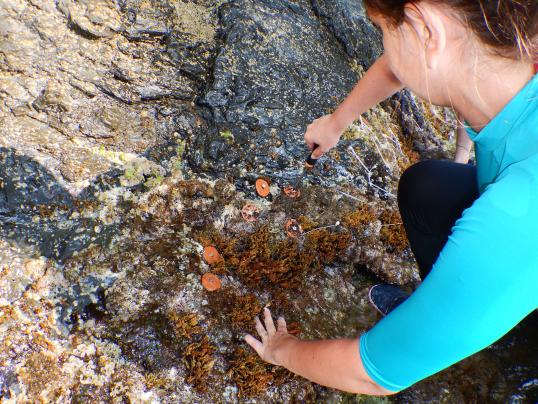About the finalist
| Lead applicants | Cinque Terre National Park - MPA Cinque Terre; University of Genoa - DISTAV; University of Trieste - Department of Life Sciences |
| Category | Marine conservation |
| Countries involved | Italy |
| Main Natura 2000 sites | Fondali Punta Mesco - Rio Maggiore (Italy) |
| Website | http://www.rocpoplife.eu/ |
Overview
Ericaria amentacea is an endemic alga of the Mediterranean Sea that lives in littoral rocky areas and reef habitats. It became extinct in Cinque Terre National Park, Italy, at the end of the 20th Century as a result of coastal development and infrastructure construction. Ericaria amentacea plays a key role in marine conservation, supporting biodiversity and food webs, and sequestering large amounts of CO2.
Within the framework of the EU LIFE programme-funded ROC-POPLife project, the management authority of Cinque Terre National Park, the University of Genoa and the University of Trieste have carried out a pilot intervention to reintroduce Ericaria amentacea to the reefs of the ‘Punta Mesco’ Natura 2000 site. The site was chosen as there were no longer any major threats in this area that could put the results of reintroduction at risk.
The activities focused on the planting of cultivated juveniles, a method that has significant advantages in terms of time, cost and ecological impact compared to other methods of reintroduction. In particular it made possible to restore the species without touching the donor sites, which was essential given the critical conservation status of the species on a wider scale.
Thanks to the successful pilot intervention, more than 200,000 juveniles have been planted. The new algal thalli (branches) have taken root along the coastline and were already fertile just one year after their reintroduction. The critical density of the alga that was created, and the natural reproduction of the transplanted population, indicate that the effective restoration of reefs and their habitat functions (e.g. refuge for fauna, food supply and water oxygenation) is likely in the medium to long term, with a good chance also of rapid natural recolonisation.
The new reintroduction technique was optimised to the particular characteristics of the species and the area. The ex-situ cultivation protocol has been published and is widely available to the scientific community to allow its adoption in other areas.
A new LIFE-funded project (REEForest LIFE) will develop marine habitat restoration methodologies targeting other species, and develop guidelines for the restoration of other Mediterranean “marine forests.
Pictures from the finalist
Video from the finalist:
Details
- Publication date
- 14 March 2024
- Author
- Directorate-General for Environment



